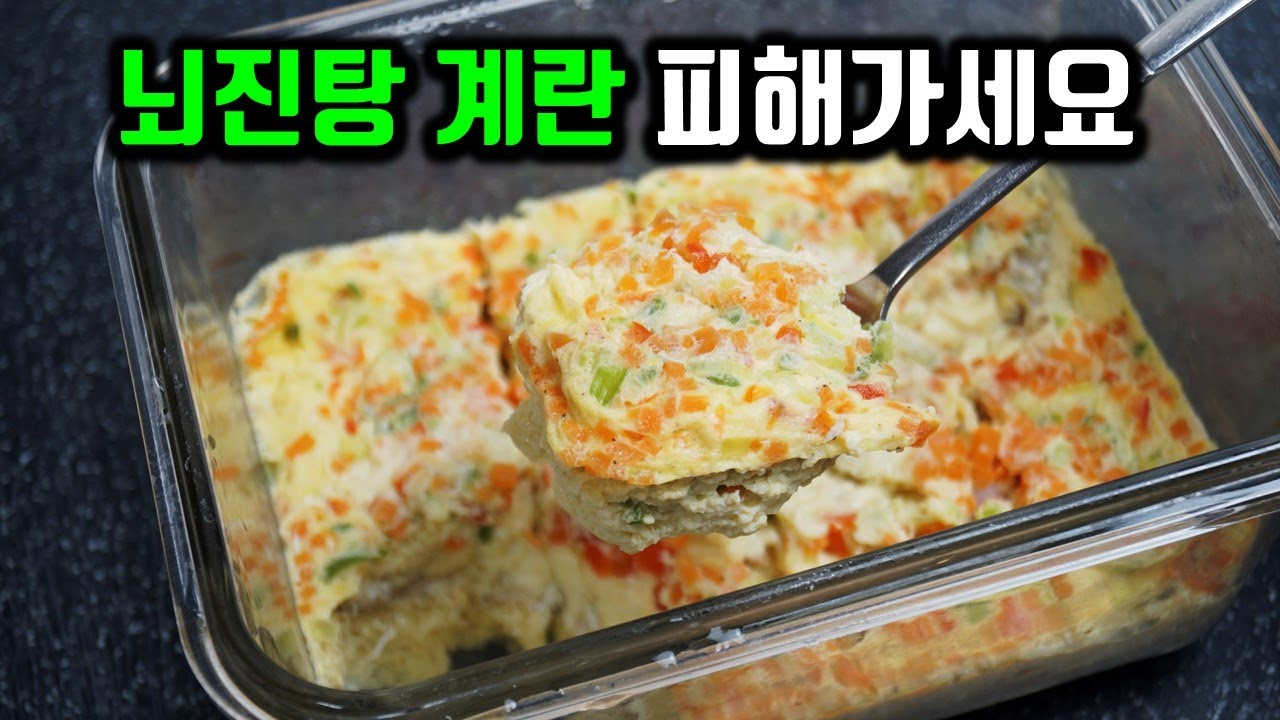Microwave Steamed Egg (Gyeranjjim)
5-Minute Microwave Gyeranjjim Recipe: Unlock Delicious Umami Flavors (Beginner-Friendly!)

Soft and moist steamed egg (Gyeranjjim) is a beloved staple on Korean dining tables! While typically seasoned with soy sauce or anchovy broth, today we’re taking it up a notch by incorporating special ingredients to maximize its umami, creating a dish so delicious it’s often called a ‘rice thief.’ Using the microwave makes it incredibly easy and quick for anyone to prepare a fantastic Gyeranjjim without complicated steps. Forget earthenware pot Gyeranjjim; you’ll achieve a wonderfully soft texture and deep flavor right in your microwave!
Main Ingredients- 4 eggs (approx. 200g)
- 20g finely chopped carrot
- 20g finely chopped bell pepper
- 1 finely chopped Korean chili pepper (optional)
- 10g finely chopped white part of green onion
- 2 shrimp, finely chopped (approx. 20g) OR 1 stick of imitation crab meat
Cooking Instructions
Step 1
First, prepare the vegetables that will contribute to the texture and color of your Gyeranjjim. Finely mince about 2 tablespoons of carrot. If the pieces are too large, the crunchy texture of the carrot might overpower the delicate softness of the steamed egg. Aim for the smallest dice possible for the best result. Also, finely mince about 2 tablespoons of bell pepper. The unique aroma of bell pepper adds a wonderful flavor and chewiness to the dish. If you don’t have bell peppers, you can omit them or use finely diced onion instead.

Step 2
For a touch of spice, finely chop one Korean chili pepper. You can adjust the amount to your preference. If you’re making this for children or prefer a milder taste, simply omit the chili pepper. You can also remove the seeds from the chili pepper for less heat.

Step 3
To enhance the overall flavor, finely chop the white part of a green onion. The green parts can sometimes impart a slightly bitter taste, so for dishes like steamed eggs, using the white part generally leads to a smoother, more pleasant flavor profile, unlike in soups or stir-fries where the green parts are often preferred.

Step 4
Add a chewy texture and delicious umami by preparing two shrimp. Lightly press them with the back of a knife, then finely chop them. If shrimp isn’t available, finely diced ham or imitation crab meat makes an excellent substitute. Feel free to use ingredients your family enjoys most.

Step 5
For the base of the Gyeranjjim, use four large eggs (approx. 60g each). Adjust the quantity based on the size of your eggs: use about three if they are extra-large (wangran) or five if they are small (soran).

Step 6
Crack the eggs into a microwave-safe dish. While mixing, use scissors to snip away the chalazae (the white, stringy bits). Some methods involve straining the eggs through a sieve, but this is often inconvenient, creates extra washing, and reduces the overall volume of the Gyeranjjim. This method is much more practical for everyday cooking.

Step 7
Add all the prepared chopped vegetables and shrimp (or imitation crab/ham) to the egg mixture.

Step 8
Stir in the Hondashi. Hondashi is a type of Japanese seasoning derived from bonito flakes, and even a small amount adds incredible depth and flavor to the steamed egg. Think of it as being similar in function to MSG or beef bouillon powder in Korean cuisine. If you don’t have Hondashi, a tiny pinch of beef bouillon powder can be used as an alternative.

Step 9
Add one tablespoon of the flesh from salted fermented shrimp (saeujeot), making sure to drain off any liquid. The savory saltiness of saeujeot provides a different, delicious kind of salinity compared to regular salt, enhancing the overall taste. If the shrimp pieces are large, chop them finely with scissors for a more pleasant texture when eating.

Step 10
Incorporate two tablespoons of Mirin for a subtle sweetness and to help meld the flavors. If Mirin is unavailable, you can substitute it with cheongju (rice wine), jeongjong, or even a tiny pinch of sugar.

Step 11
Add a pinch of black pepper. If using freshly ground pepper, ensure it’s ground very finely. Coarse pepper grounds can be unpleasant when biting into the smooth texture of the steamed egg.

Step 12
As another secret to delicious savoriness, add a small amount of fish sauce (about 1/3 tablespoon). Fish sauce provides a unique umami depth that complements the other seasonings and enhances the overall flavor profile, much like it does when making savory pancakes (jeon).

Step 13
Pour in one cup of water (200cc) and stir everything together thoroughly until well combined. Ensure all ingredients are evenly distributed; otherwise, you might end up with spoonfuls of just vegetables, which can happen in institutional cooking. Proper mixing at this stage prevents uneven distribution.

Step 14
Cover the microwave-safe dish with microwave-safe plastic wrap. Poke about 10 small holes in the wrap using a fork or toothpick. This venting is crucial: it allows steam to escape, preventing the Gyeranjjim from bursting due to pressure and helping it cook into a fluffy, light texture. Using wrap with vents is preferable to a lid for this reason.

Step 15
Place the covered dish in the microwave and cook for 9 to 10 minutes. Cooking time may vary depending on your microwave’s wattage.

Step 16
For smaller batches of Gyeranjjim (e.g., made with 1-2 eggs), cooking for just 6 minutes might make the surface look set.

Step 17
However, if the Gyeranjjim is undercooked, the liquid released onto the surface will appear cloudy, like in the picture. If you consume it at this stage, you might find it has a raw, eggy texture.

Step 18
A properly cooked Gyeranjjim will have a clear, translucent liquid on its surface after cooking. This is the sign of a perfectly done steamed egg!

Step 19
Enjoy this wonderfully soft and flavorful Gyeranjjim as a delicious side dish with your rice! It’s sure to be a hit.



